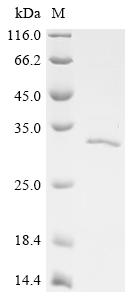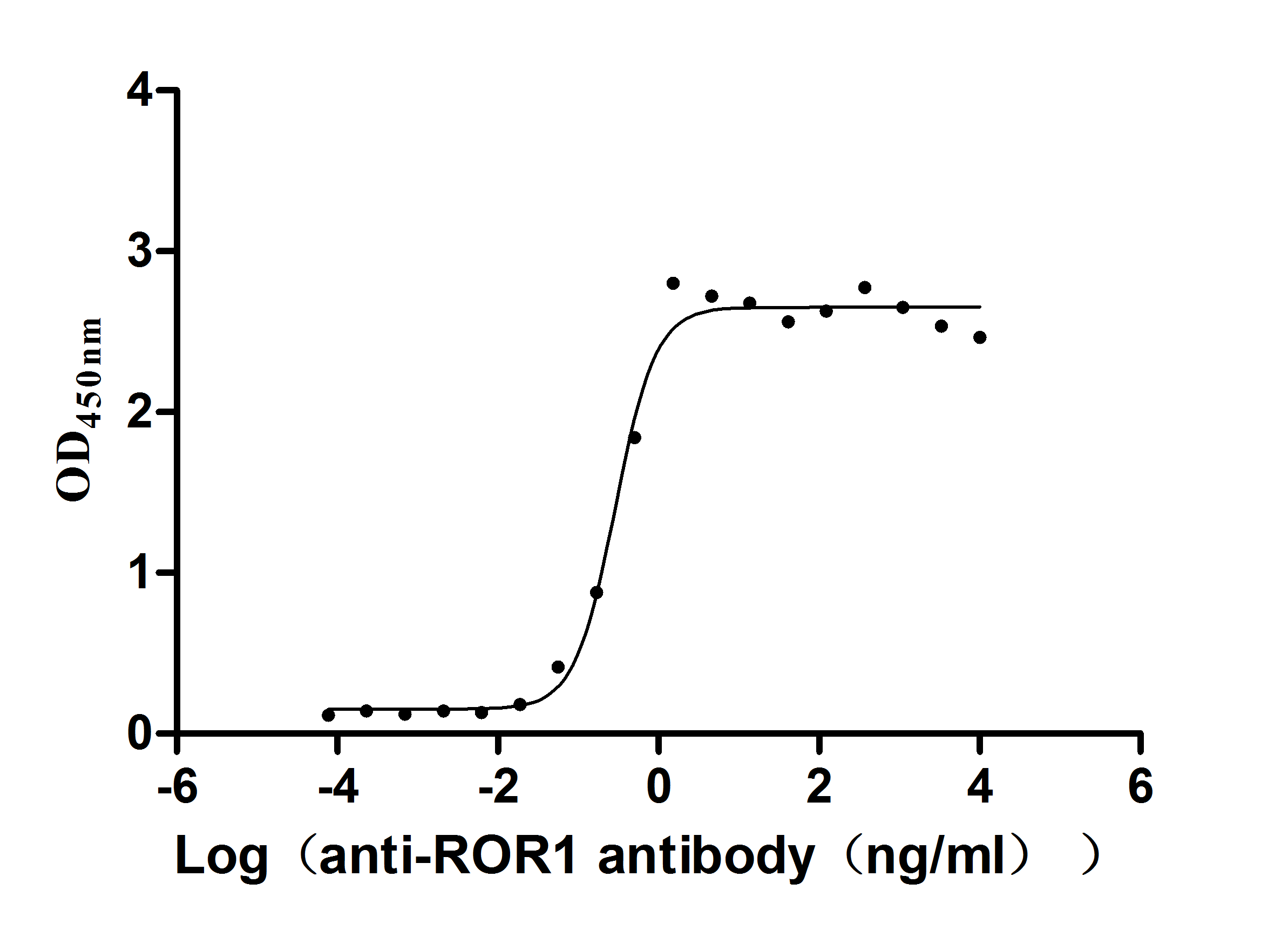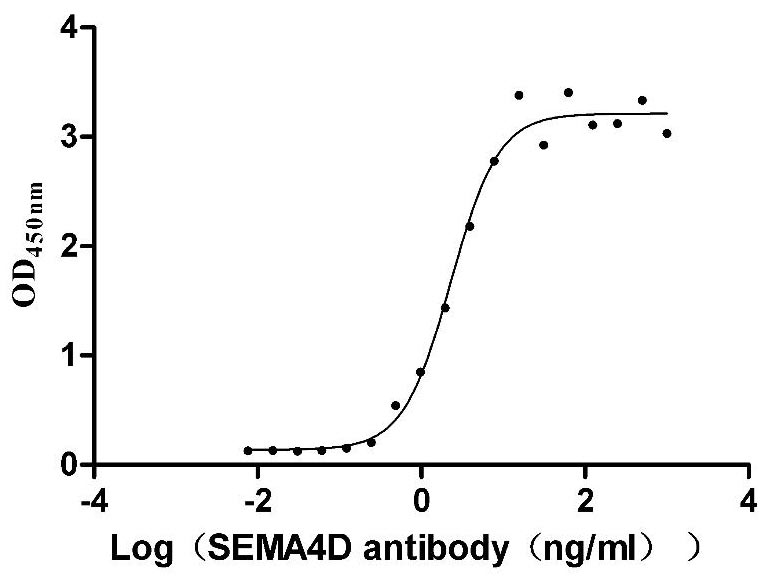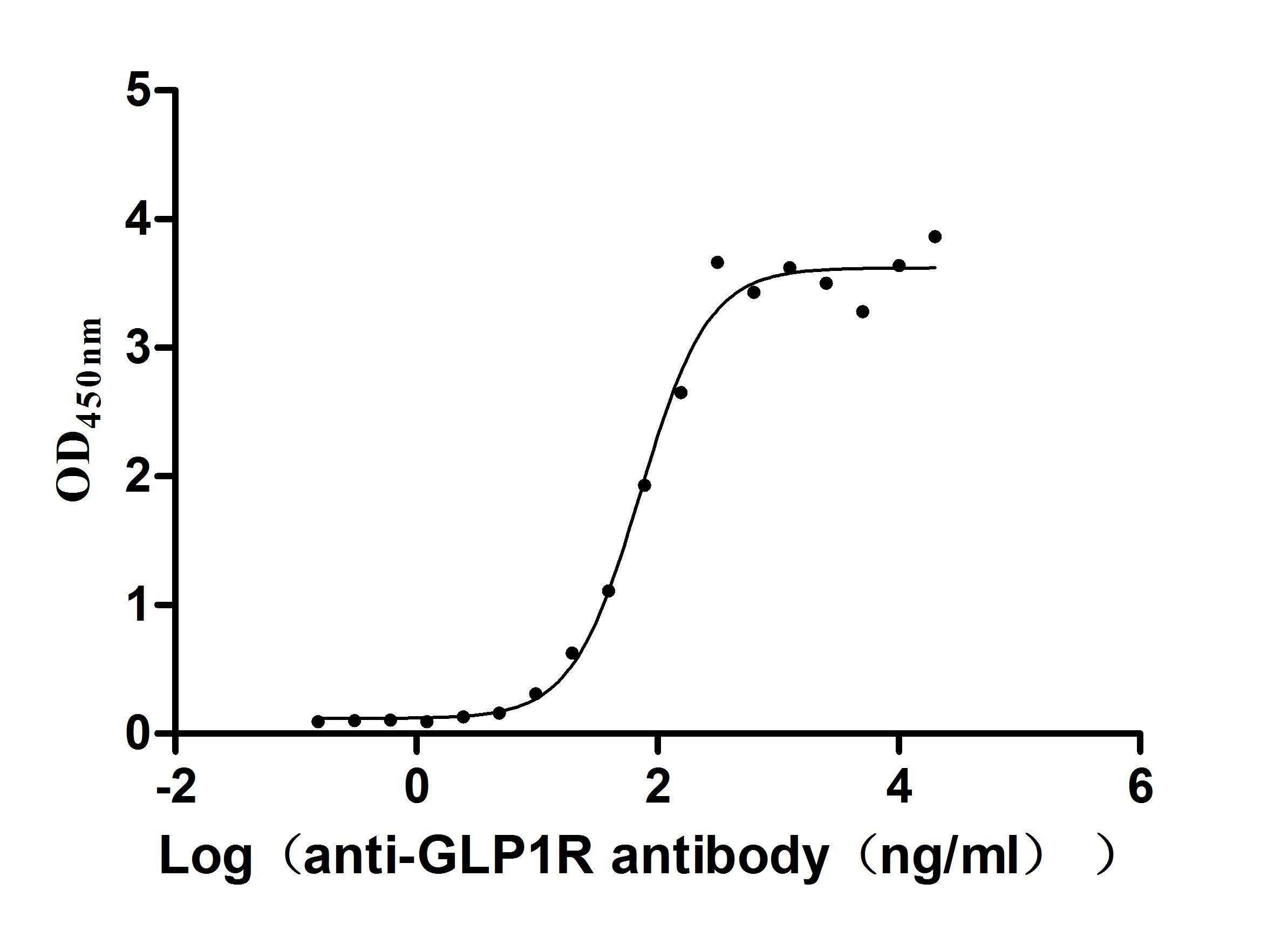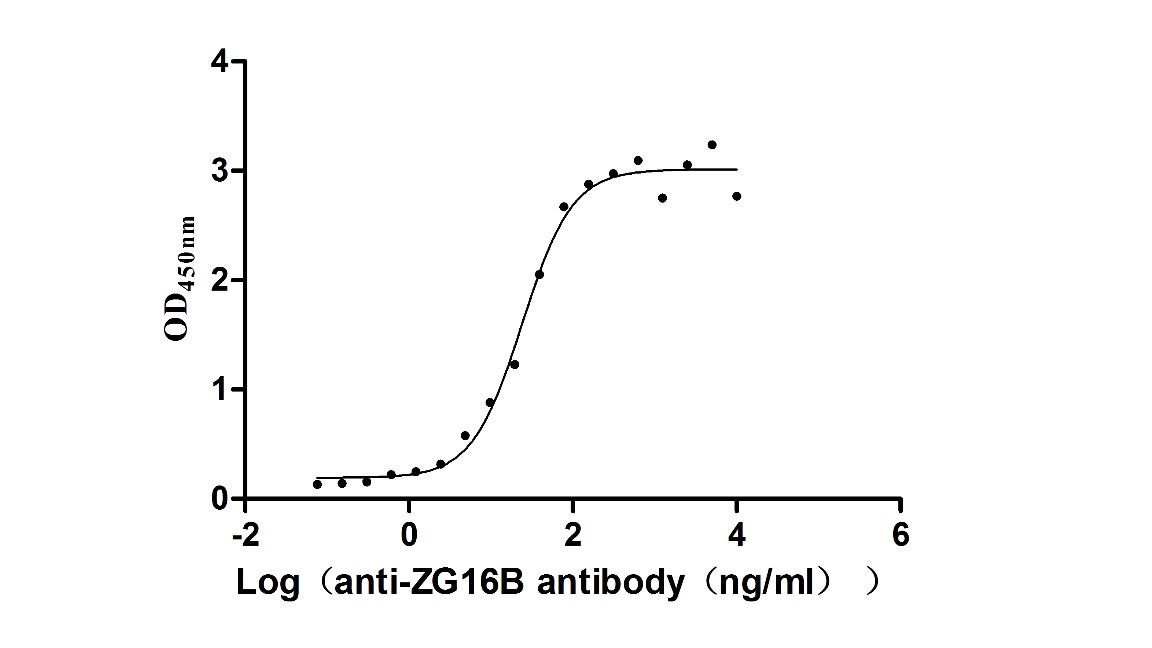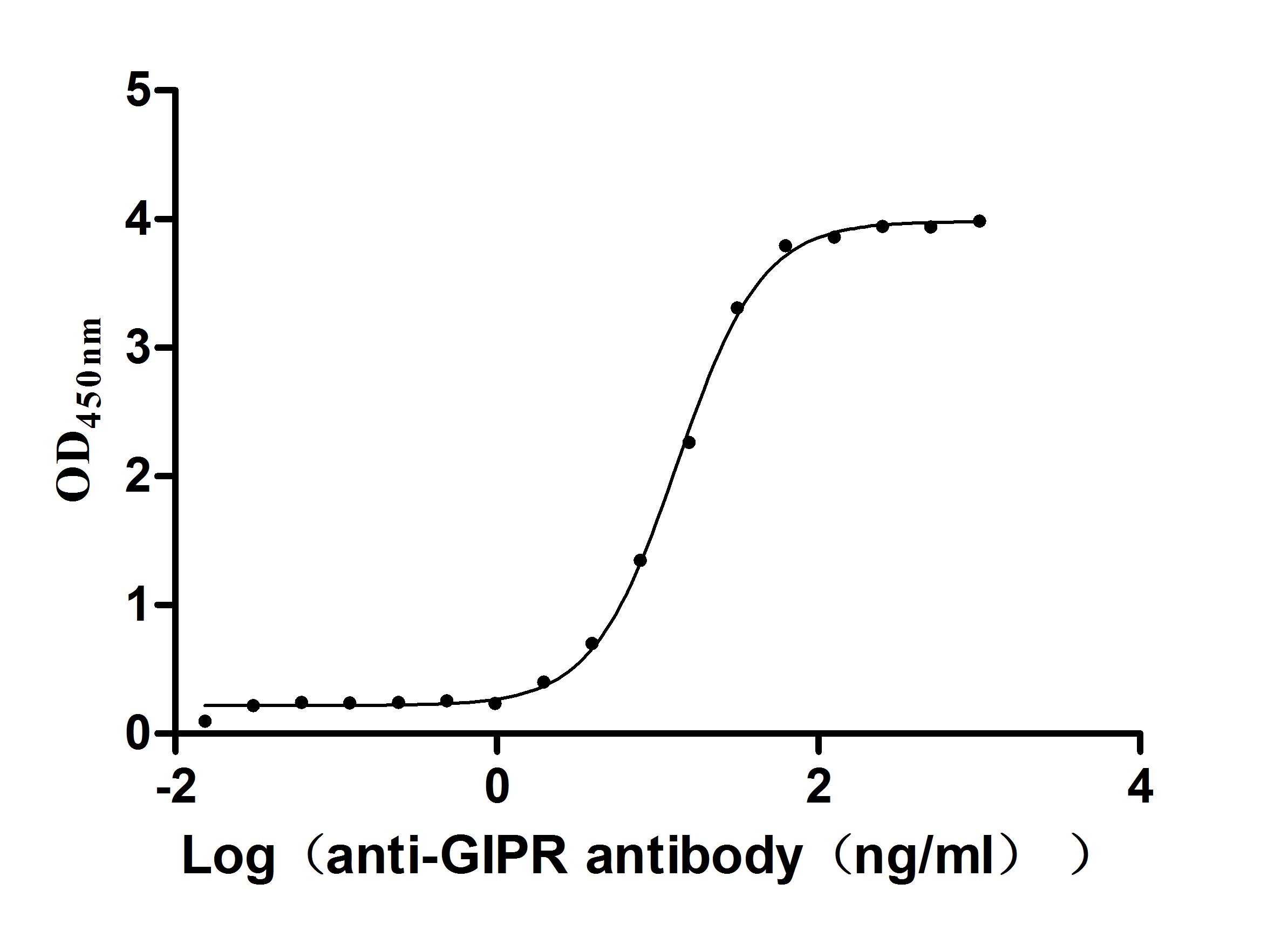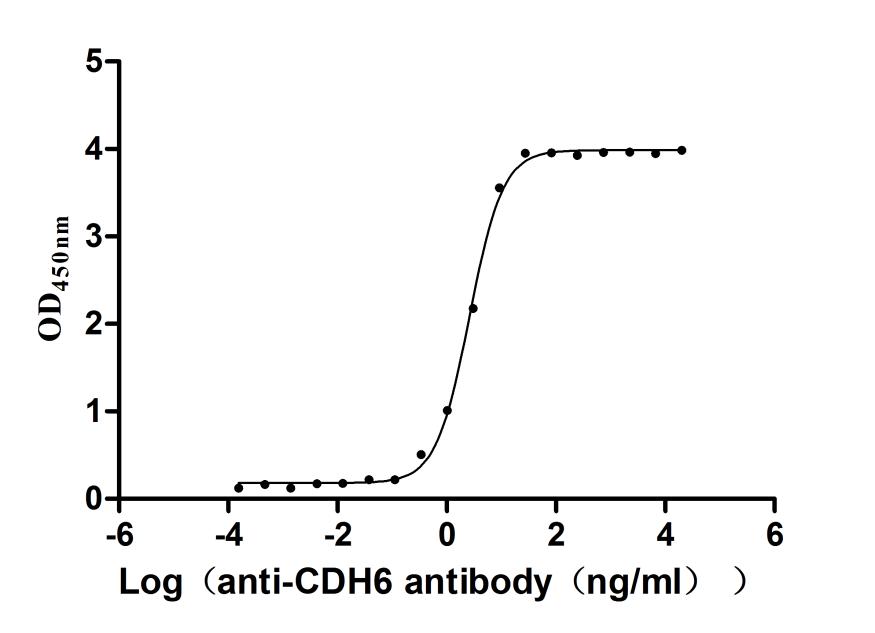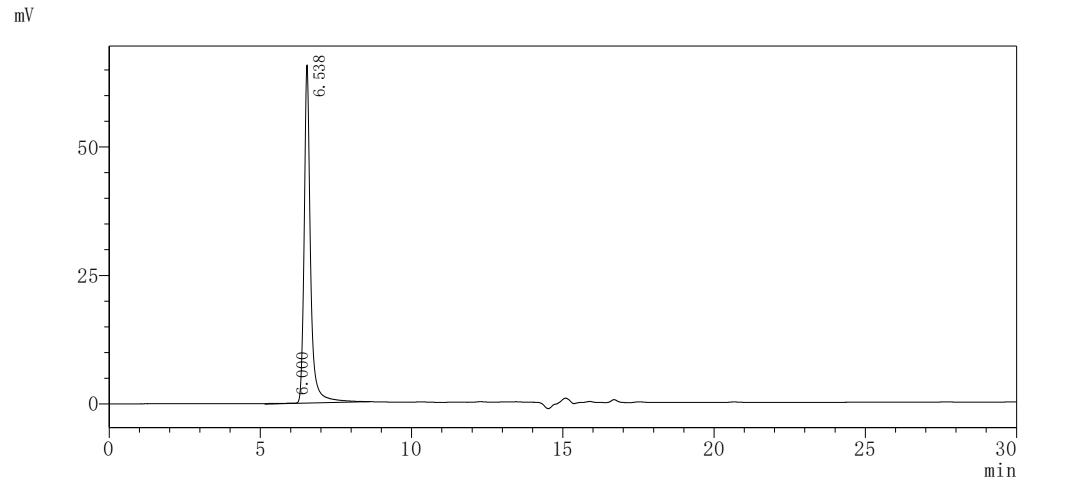Recombinant Human Tyrosine-protein phosphatase non-receptor type 14 (PTPN14), partial
In Stock-
中文名稱:人PTPN14重組蛋白
-
貨號:CSB-EP623010HU
-
說明書:
-
規格:¥1836
-
圖片:
-
其他:
產品詳情
-
純度:Greater than 90% as determined by SDS-PAGE.
-
生物活性:Not Test
-
基因名:PTPN14
-
Uniprot No.:
-
別名:Protein-tyrosine phosphatase pez
-
種屬:Homo sapiens (Human)
-
蛋白長度:Partial
-
來源:E.coli
-
分子量:29.3 kDa
-
表達區域:1-189aa
-
氨基酸序列MPFGLKLRRTRRYNVLSKNCFVTRIRLLDSNVIECTLSVESTGQECLEAVAQRLELRETHYFGLWFLSKSQQARWVELEKPLKKHLDKFANEPLLFFGVMFYVPNVSWLQQEATRYQYYLQVKKDVLEGRLRCTLDQVIRLAGLAVQADFGDYNQFDSQDFLREYVLFPMDLALEEAVLEELTQKVAQE
Note: The complete sequence may include tag sequence, target protein sequence, linker sequence and extra sequence that is translated with the protein sequence for the purpose(s) of secretion, stability, solubility, etc.
If the exact amino acid sequence of this recombinant protein is critical to your application, please explicitly request the full and complete sequence of this protein before ordering. -
蛋白標簽:C-terminal 6xHis-tagged
-
產品提供形式:Liquid or Lyophilized powder Warning: in_array() expects parameter 2 to be array, null given in /www/web/cusabio_cn/public_html/caches/caches_template/default/content/show_product_protein.php on line 662
Note: We will preferentially ship the format that we have in stock, however, if you have any special requirement for the format, please remark your requirement when placing the order, we will prepare according to your demand. -
緩沖液:If the delivery form is liquid, the default storage buffer is Tris/PBS-based buffer, 5%-50% glycerol. If the delivery form is lyophilized powder, the buffer before lyophilization is Tris/PBS-based buffer, 6% Trehalose.
-
復溶:We recommend that this vial be briefly centrifuged prior to opening to bring the contents to the bottom. Please reconstitute protein in deionized sterile water to a concentration of 0.1-1.0 mg/mL.We recommend to add 5-50% of glycerol (final concentration) and aliquot for long-term storage at -20℃/-80℃. Our default final concentration of glycerol is 50%. Customers could use it as reference.
-
儲存條件:Store at -20°C/-80°C upon receipt, aliquoting is necessary for mutiple use. Avoid repeated freeze-thaw cycles.
-
保質期:The shelf life is related to many factors, storage state, buffer ingredients, storage temperature and the stability of the protein itself.
Generally, the shelf life of liquid form is 6 months at -20°C/-80°C. The shelf life of lyophilized form is 12 months at -20°C/-80°C. -
貨期:3-7 business days
-
注意事項:Repeated freezing and thawing is not recommended. Store working aliquots at 4℃ for up to one week.
-
Datasheet & COA:Please contact us to get it.
相關產品
靶點詳情
-
功能:Protein tyrosine phosphatase which may play a role in the regulation of lymphangiogenesis, cell-cell adhesion, cell-matrix adhesion, cell migration, cell growth and also regulates TGF-beta gene expression, thereby modulating epithelial-mesenchymal transition. Mediates beta-catenin dephosphorylation at adhesion junctions. Acts as a negative regulator of the oncogenic property of YAP, a downstream target of the hippo pathway, in a cell density-dependent manner. May function as a tumor suppressor.
-
基因功能參考文獻:
- p53 deficiency promotes Yap signaling and that PTPN14 and TP53 mutations are mutually exclusive in human cancers. PMID: 29017057
- study determined that high-risk E7 proteins target the proteolysis of the cellular protein tyrosine phosphatase PTPN14 and find that this activity is correlated with the retinoblastoma-independent transforming activity of E7 PMID: 27651363
- PTPN14 is classified as a potential tumor suppressor protein, and is very susceptible to HPV E7-induced proteasome-mediated degradation. PMID: 28100625
- The Hippo signaling pathway was significantly associated with ER-negative breast cancer (pathway level P = 0.02). Gene-based analyses revealed that CDH1 was responsible for the pathway association (P < 0.01),corrected P = 0.02). rs142697907 in PTPN14 was associated with ER-positive breast cancer and rs2456773 in CDK1 with ER-negativity in case-only analysis after gene-level correction PMID: 27485598
- PTPN14, a Pez mammalian homolog, is degraded by overexpressed Su(dx) or Su(dx) homologue WWP1 in mammalian cells. PMID: 25814387
- Findings indicate a pathway involving protein-tyrosine phosphatase D2 PTPD2 (PTPN14) and the lipid second messenger phosphatidic acid that promotes ERBB2 receptor function. PMID: 25681440
- results indicate a potential regulatory role of PTPN14 in the Hippo pathway and demonstrate another layer of regulation in the YAP oncogenic function PMID: 25023289
- Data demonstrate that PTPN14 downregulation can phenocopy YAP activation in mammary epithelial cells and synergize with YAP to induce oncogenic transformation. PMID: 23613971
- Data show that p130 Crk-associated substrate is a direct substrate of PTPN14 and that PTPN14 specifically regulates p130Cas phosphorylation at tyrosine residue 128 in colorectal cancer cells. PMID: 22710723
- YAP is a direct substrate of PTPN14. Results indicate a potential regulatory role of PTPN14 on YAP and demonstrate a novel mechanism in YAP regulation. PMID: 22525271
- YAP forms a protein complex with PTPN14 through the WW domains of YAP and the PPXY motifs of PTPN14. PMID: 22689061
- that PTPN14 acts to suppress cell proliferation by promoting cell density-dependent cytoplasmic translocation of YAP1 PMID: 22948661
- PTPN14 has a role in angiogenesis and/or arteriovenous fate, acting via EphrinB2 and ACVRL1/activin receptor-like kinase 1 PMID: 22233626
- These results suggest a unique and conserved role for PTPN14 in the regulation of lymphatic development in mammals and a nonconserved role in choanal development in humans. PMID: 20826270
- results provide a high-resolution crystal structure of the phosphatase PTPN14, thereby providing insight into its distinct substrate specificity and identifying unique structural features PMID: 16534812
- Dysregulation of TGFbeta signaling as a possible link between Pez mutation and cancer progression. PMID: 18677119
顯示更多
收起更多
-
相關疾病:Choanal atresia and lymphedema (CHATLY)
-
亞細胞定位:Cytoplasm. Cytoplasm, cytoskeleton. Nucleus. Note=Translocation into the nucleus is associated with induction of cell proliferation. Partially colocalized with actin filaments at the plasma membrane.
-
蛋白家族:Protein-tyrosine phosphatase family, Non-receptor class subfamily
-
組織特異性:Ubiquitous.
-
數據庫鏈接:
Most popular with customers
-
Express system: Mammalian cell
Species: Homo sapiens (Human)
-
Recombinant Human G-protein coupled receptor family C group 5 member D (GPRC5D)-VLPs (Active)
Express system: Mammalian cell
Species: Homo sapiens (Human)
-
Recombinant Macaca mulatta Semaphorin-4D isoform 1 (SEMA4D), partial (Active)
Express system: Mammalian cell
Species: Macaca mulatta (Rhesus macaque)
-
Recombinant Human Glucagon-like peptide 1 receptor (GLP1R), partial (Active)
Express system: Mammalian cell
Species: Homo sapiens (Human)
-
Recombinant Macaca fascicularis zymogen granule protein 16 homolog B (ZG16B) (Active)
Express system: Mammalian cell
Species: Macaca fascicularis (Crab-eating macaque) (Cynomolgus monkey)
-
Recombinant Macaca fascicularis Gastric inhibitory polypeptide receptor (GIPR), partial (Active)
Express system: yeast
Species: Macaca fascicularis (Crab-eating macaque) (Cynomolgus monkey)
-
Recombinant Human Cadherin-6 (CDH6), partial (Active)
Express system: Mammalian cell
Species: Homo sapiens (Human)
-
Recombinant Human C-C chemokine receptor type 9 (CCR9)-VLPs (Active)
Express system: Mammalian cell
Species: Homo sapiens (Human)

